If you show people a cloudy, overcast day side-by-side with a bright, sunny one, almost everyone will choose the sunny day as the one that makes them happier.
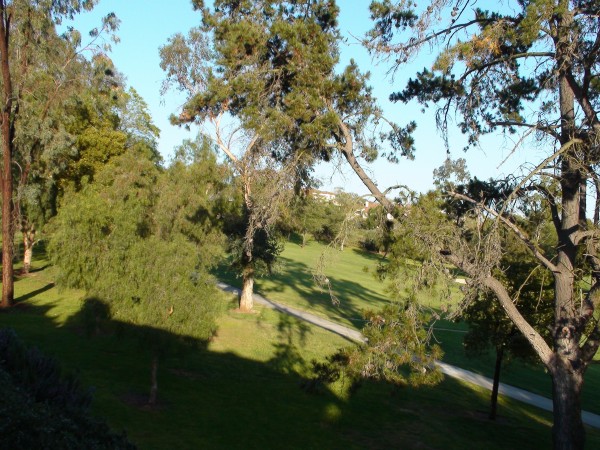
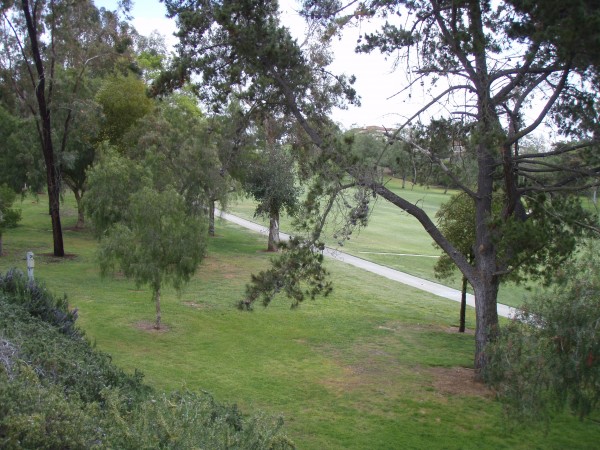
Dave, one of Starts With A Bang's longest readers, is no exception. The extended winter he's living through in Kansas isn't making him any happier:
Someone remind me what the Sun looks like, it's been a couple of days since I've seen it....
No problem, Dave. Sure, there are good reasons that you want to see the Sun, for the effects it has on regulating your circadian rhythms, on the release of various endorphins, for Vitamin D production, and for just plain making you feel good. But let me remind those of you who are having extended winters what this great nuclear furnace looks like from Earth. We've got a Sunrise on Earth, both seen from Earth:

and also as seen from space:
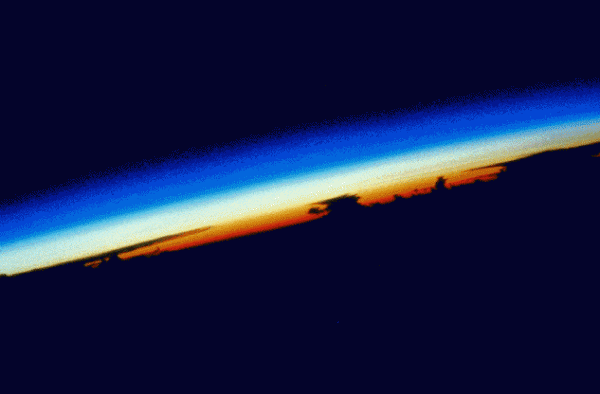
Notice what the atmosphere is doing here? How the sky at sunrise looks red to us, but from space, it's only the very lowest part of the atmosphere that looks red, and the upper parts look blue? We can learn something very interesting about light works from this.
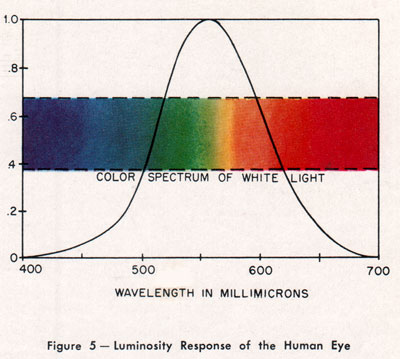
When sunlight passes through the atmosphere, it disperses the very different wavelengths of visible light, from the bluest blues at about 400 nanometers to the deepest reds at around 700 nanometers. Since light at Earth passes through an atmosphere instead of a vacuum, the different wavelengths spread out, the same way light does when you shine it through a prism:
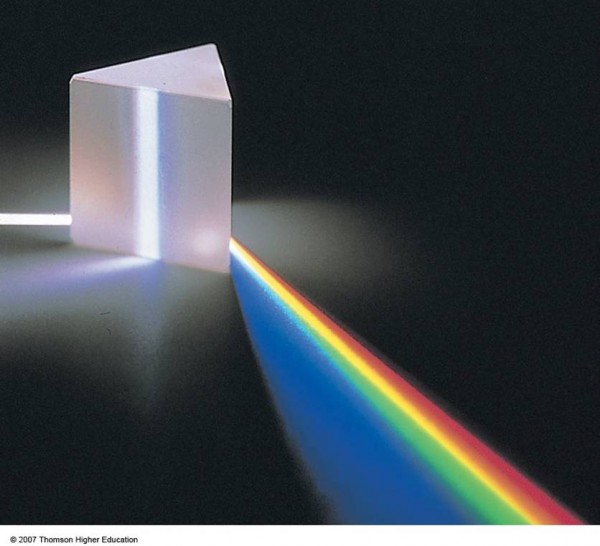
Well, do you notice how the blue light "bends" more due to the prism? It also bends more due to the atmosphere, which means that it gets scattered away more easily. This is why, if you look out at the sky during the early morning or late evening, the sky looks red. There's so much atmosphere to pass through that the blue light doesn't make it through as well as the red does. So when the Sun is low on the horizon, the atmosphere scatters the blue light away, but the red light still gets to your eyes. And you see this:

But during the day, that same scattered blue light fills the upper atmosphere, but enough of the full spectrum comes straight through that the sky looks blue and the Sun looks white!

If we didn't have the thick atmosphere we have, the sky wouldn't look blue! (Go ask Mars if you don't believe me.) So what about the Sun in that picture? It's clearly white. Then, I ask, why does the Sun look yellow to you? Because of your imperfect eyes, which have the highest response in the yellow part of the spectrum. It's also incredibly bright against a blue background, which helps fool your eyes. But it's really white, as you can see if you look at sunlight shining down on a white piece of paper.
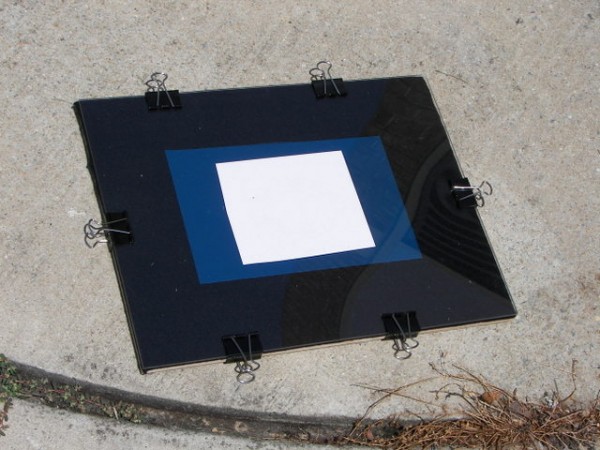
So I hope these images and the science of sunlight are enough to get you through the hard times, and I expect some beautiful pictures from you when the Sun does come out, my little orphan Annie!

We've had an absolutely gorgeous Easter here in Denmark. Five days of clear sun - finally. Still a bit too windy to lie out for a tan, but every little helps.
I've had a 'daylight' lamp for the last two Winters. Does seem to help reset that damn biochemistry, yes.
I feel brighter already! Thanks Ethan!
But don't disparage the dark. Its a good time for making whoopee.
As others may have noticed, the prismatic effect of the sunlight in the atmosphere is conspicuously devoid of green.
Now, the mechanism that prevents the sun from appearing green upon direct contact of its photons with a human eye seems straight-forward. The sun emits photons at many wavelengths, and when our eyes get that mix, we see white or sometimes yellow.
However, what is not immediately obvious to me is why - if the sun's light contains ~500nm wavelength photons - we do not see it in the atmospheric spread? Obviously, a regular prism on the ground does give us green light.
So it must be that a water droplet or glass prism interacts with light (perhaps specifically green light) in a different manner than the atmosphere. I'm tempted to speculate on the effect of nitrogen based merely on the knowledge that nitrogen and green light have some connection (aurorae) and that nitrogen is the most abundant gas in our atmosphere. What does alter the prismatic performance of air as opposed to water or glass?
Although, were it not for dust in Mars' atmosphere, its sky would look dark blue. Sort of between the moon's black sky (due to no atmosphere) and earth's light blue sky (due to thick atmosphere).
And why doesn't our sky appear violet, or at least violet-blue, since violet's the most readily scattered light? Mostly it's attributed to our rather dim perception of violet, although I suspect that less violet light comes from the sun than does blue, as well.
Glen D
http://tinyurl.com/6mb592
sean hogge:
As I understand it, the reason we don't see the green is an issue of receptors, as you suspected. The blue receptors are more strongly stimulated than the corresponding red and green receptors. In addition, the blue light *also* stimulates the red and green receptors:
http://math.ucr.edu/home/baez/physics/General/BlueSky/blue_sky.html
But why is the sky NEVER green between daylight and sunset? Now that has got me stumped so far... (I'm not referring to the elusive green flash.)
I thought that the reason the sun looks yellowish is that, since the atmosphere scatters much of the blue light, the light that we see coming at us directly from the sun when we look at it has less of the blue part of the spectrum, making it look more yellow. The paper still looks white because blue light still reaches it in the proper proportion, only some portion of it is scattered through the atmosphere first and does not come in a straight line from the sun. If it were due to the imperfect response of our photoreceptors, then wouldn't the paper look the same yellow as the sun since it is reflecting all wavelengths? The blue background fooling your eyes makes sense too though, especially since staring at a blue background then looking at something white make it look yellow.
You forgot to mention Pink Floyd in your description of refraction.
Cool article, but the (especially the top 3) images need to be sized and reasonably compressed for web viewing.
The top 3 images exceed 10MB between them.
If you need any assistance in making versions that are optimal in size and quality, be welcome to drop me a line. I'd be happy to assist.
Hmm.. Any effort to why the sky is blue then?
Why the sky is blue came up in a conversation with my wife recently, and I initially asserted that the atmosphere REFRACTS the light like a prism, and when she said that she had heard something different, I looked it up and found that, indeed, it SCATTERS light, which is different. I still wonder, though, especially based on the similarity of frequency response (shorter wavelengths scattering/bending more than long ones), are these concepts related at all, or are they completely different phenomena? (Of course, you know me; I'm tempted to ask for a QED-based explanation of both, but that's probably a bit much, and may end up being over my head anyway, so whatever you've got....)
Are scattering and refraction related? Yes. Will this satisfy you? No.
I recommend looking up Rayleigh Scattering, since that's the "technical enough" explanation. Basically, blue light is scattered more easily by the atmosphere. This means that, when you pass through a bit of the atmosphere, a bit of the blue light gets scattered in all directions, and the scattered light is then re-emitted spherically outwards. So you see a little bit of blue coming at you from all directions. But when you pass through a lot of the atmosphere, enough blue is scattered away that you only see the red. That's why the sky transitions from red to orange to yellow to light blue.
As to why not green in there? Your eyes' insensitivity to green is only a small part of it, the big problem is that yellow and blue, when mixed together additively, do not make green! The sky tends to go whitish for awhile, and then transitions to a very pale blue.
It being a function of scattering vs. refraction makes sense.
So in terms of QED, the summing of probability amplitudes allows for photons to act in a comparatively uniform fashion (given a sufficient data set). In Rayleigh scattering, no such uniformity is observed until an enormously macroscopic view is considered. Unless I'm missing something with either or both.
However, in a sunset, the green light is not from yellow and blue mixing. There are photons of the green wavelength, I thought. In fact, doesn't the sun's blackbody curve peak in green?
So if our eyes weren't handicapped thusly, surely we would see the green, would we not?
Glen:
Isn't the color of Mars' sky also a function of its composition? Certainly, being one hundreth as thick as Earth's perhaps its composition contributes less than the dust in this specific instance, but pedantry makes an orbital mass travel along its geodesic such that observers trace its path as an ellipse of some measurable eccentricity!
Surely on a cloudless day the sun's disk appears slightly yellow due to scattering of blue. In space, where the sun is seen against a black background, it would appear whiter than it does at the Earth's surface. Can anyone verify this?
This is a horrendous simplification of a something that's much more complicated. The article is misleading because the human eye doesn't measure direct intensity of light, but, instead measures local intensity of light relative to overal intensity of light in the entire scene.
The card in the photo is white because automatic white-balancing in the camera with which the photo was taken has made it white. And we think that's perfectly correct because white-balance correction in the camera mimics the automatic white-balancing that the human visual system performs. If you were to disable white-balance correction in the camera, you'd find that "white" cards under flourescent lights would have a strong green cast, white cards under incandescent lights would have a strong orange cast, and white cards outdoors would have a cast that varies between blue and orange, depending on the placement of the card relative to the dome of the sky, and the sun.
You can see an artifact of this in the first picture. The trees are noticeably more yellow-orange than in the second. Why? Because the human eye (and the camera) places the whitepoint half-way between the blue tones of direct and indirect light from the dome of the sky, and the light of direct sunlight (which is relatively more yellow/orange).
A follow-on thought. Science is particularly fond of tidy linear relationships (which are conveniently easy to calculate). I wonder whether science doesn't have a blind spot when it comes to the kinds of untidy non-linear relationships that govern phenomena such as actual human color perception.
edrowland:
You accuse the article of oversimplification, then accuse the very process that gave you the knowledge to make this determination as having a blind spot to the area you're criticizing?
Either you've missed the contradiction, or you didn't gain your knowledge of optics through science. In either case, your case is completely undermined.
Granted, in the constrainst of a blog, there will almost always be a simplification. Often, it can seem that the inability to instill several years of specialized education and experimentation in the reader prevents the effective transmission of knowledge. We're working on the backs of envelopes here. It's wonderful when a theory, idea, formula or phenomenon can be described in its entirety, but it's equally wonderful when a confusing portion of one more complex becomes less veiled than it was before. This is the creeping progress of, and is only one facet of the jewel that is science.
Just make sure yours isn't "princess" cut.
Ed,
There's no problem with the science of this. As you state, there are many more details than the ones I gave, all of which are well-understood at this point.
Yes, Sean is right: I tried to give the simplest, shortest explanation possible that still communicates the main results of the science correctly.
But thank you for adding more detailed information for those who are interested!
If you look up at the sky *near* the Sun, you will --perhaps surprisingly -- find that the sky looks much paler and closer to white/clear close to the Sun than the blue you're used to. This doesn't show up on a camera, either, which makes me believe that your cones (that give you the color response) may be getting overridden by the sheer amount of light coming from the Sun! But this is a question I *don't* know the answer to!
That's a really cool looking picture of a sunrise in space. I had no idea that the eye tends toward the yellow spectrum of the sunlight. That's very interesting. I learned a lot about sunlight and the color spectrum.